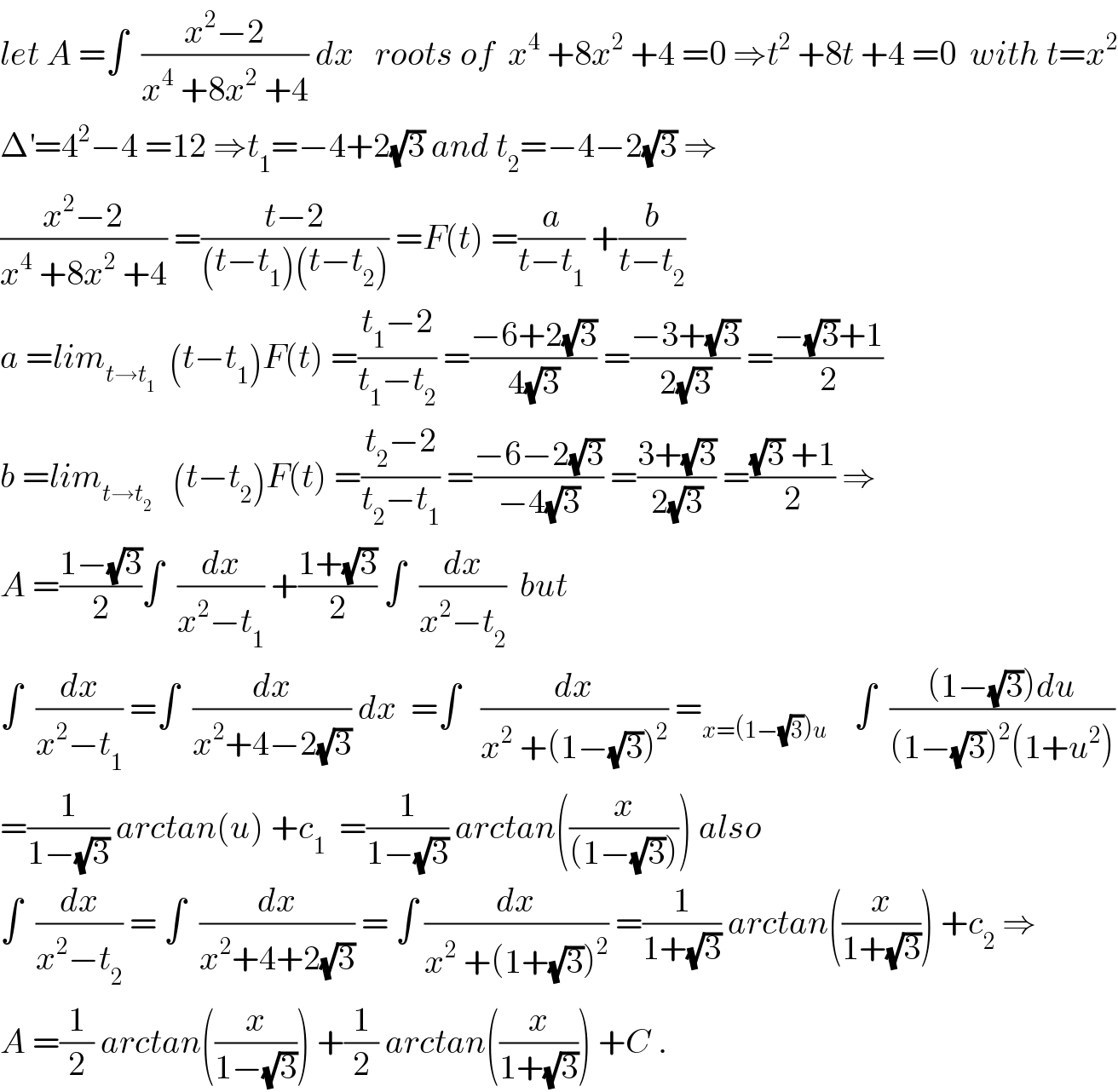Question Number 58478 by rahul 19 last updated on 23/Apr/19

Commented by maxmathsup by imad last updated on 24/Apr/19

Answered by Prithwish sen last updated on 23/Apr/19

Commented by rahul 19 last updated on 24/Apr/19

Answered by mr W last updated on 23/Apr/19

Commented by rahul 19 last updated on 24/Apr/19

